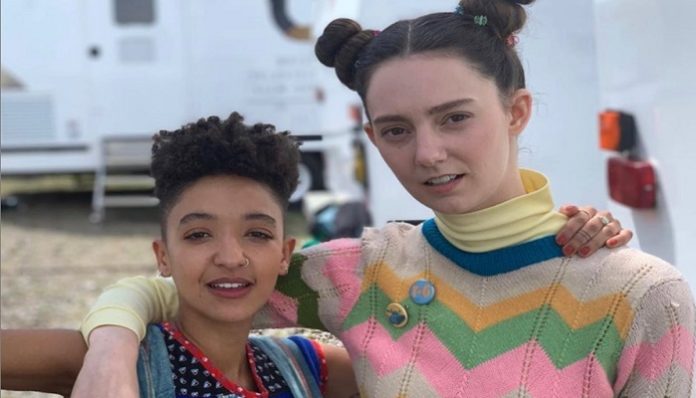
Television has a rocky past regarding LGBTQ+ representation, from perpetuating harmful stereotypes to killing off token gay characters for drama’s sake.
However, TV has come a long way over the past few years. With every show, it seems like more identities are being explored authentically and respectfully. And while remnants of gay stereotypes might exist, they’re fewer and farther between.
This Pride Month, I want to highlight LGBTQ+ characters in television that accurately depict various identities.
1. Double Trouble from “She-Ra and the Princesses of Power”
Netflix’s “She-Ra” reboot had already done a great job depicting gay and bisexual identities. But seeing them put in non-binary representation was incredible. Double Trouble is a badass shape-shifting mercenary, flip-flopping between the Horde’s and Princess Rebellion’s sides as they see fit.
But no matter which side they’re on, their pronouns are always respected by every character. A non-binary actor even plays them!
2. Nomi Marks from “Sense8”
Often, if there’s an ensemble cast, the transgender one is relegated to a side character (in the rare instance that there even is a trans character). However, Nomi plays a central role in the plot of “Sense8.”
The show does a great job of balancing her identity struggles with the story’s action and suspense. Also, her relationship with her girlfriend Amanita is one of the most healthy lesbian couples I’ve ever seen on TV.
3. Rosa Diaz from “Brooklyn Nine-Nine”
Seeing Rosa Diaz’s coming-out arc was so validating to so many bisexual people. Though “Brooklyn Nine-Nine” is not a romance-centric show, Rosa’s bisexual story is given so much thought and care, and it’s portrayed wonderfully.
4. Todd Chavez from “Bojack Horseman”
The asexual community has long struggled to be recognized by the LGBTQ+ community. So to have a major character from a popular Netflix show come out as asexual was huge.
The show respectfully portrays Todd’s initial confusion and feeling “broken” because of his asexuality all the way to his self-acceptance while still maintaining its comedic tone.
5. Benson Mekler from “Kipo and the Age of Wonderbeasts”
There’s a plethora of examples of on-screen gay male representation, but there was something refreshing about Benson.
His coming-out scene with Kipo was so casual. When Kipo started flirting with Benson, he quickly told her “I’m gay,” and that was that. It’s not an issue, and his identity is never called into question. He even gets a boyfriend later in the show and their relationship is adorable.
6. Ola Nyman from “Sex Education”
Though bisexual and pansexual tend to fall under the same umbrella, the difference is very important to a lot of people. So it’s exciting to see someone use the pansexual label in a show.
I love that Ola thought liking people regardless of gender was something everyone did, then realized that was part of her identity. It’s something a lot of bi/pan people experience. Also, her solidarity with Adam — a bisexual character — was amazing to see.
7. Mo from “Zoey’s Extraordinary Playlist”
When it comes to gender-noncomforming characters, Mo is often overlooked, but he really shouldn’t be. Though he often serves as a supportive best friend character, he has a lot of great story arcs involving his relationships and accepting his identity.
Though it’s clear that he’s comfortable in his skin, he also makes it clear that it took hard work to get there.
As a side note, there’s a moment where he meets someone new and they ask for his pronouns, to which he responds he usually uses he/him but is okay with any pronouns. It’s so wonderful to see asking for pronouns being normalized, especially on a network TV show.
8. Darryl Whitefeather from “Crazy Ex-Girlfriend”
He has an entire song demystifying bisexual stereotypes, for crying out loud!
I could mention so many more characters here. Television is only getting more accepting of LGBTQ+ identites, and I’m excited to see where they go next.
Featured image via Netflix’s Sex Education on Instagram

















